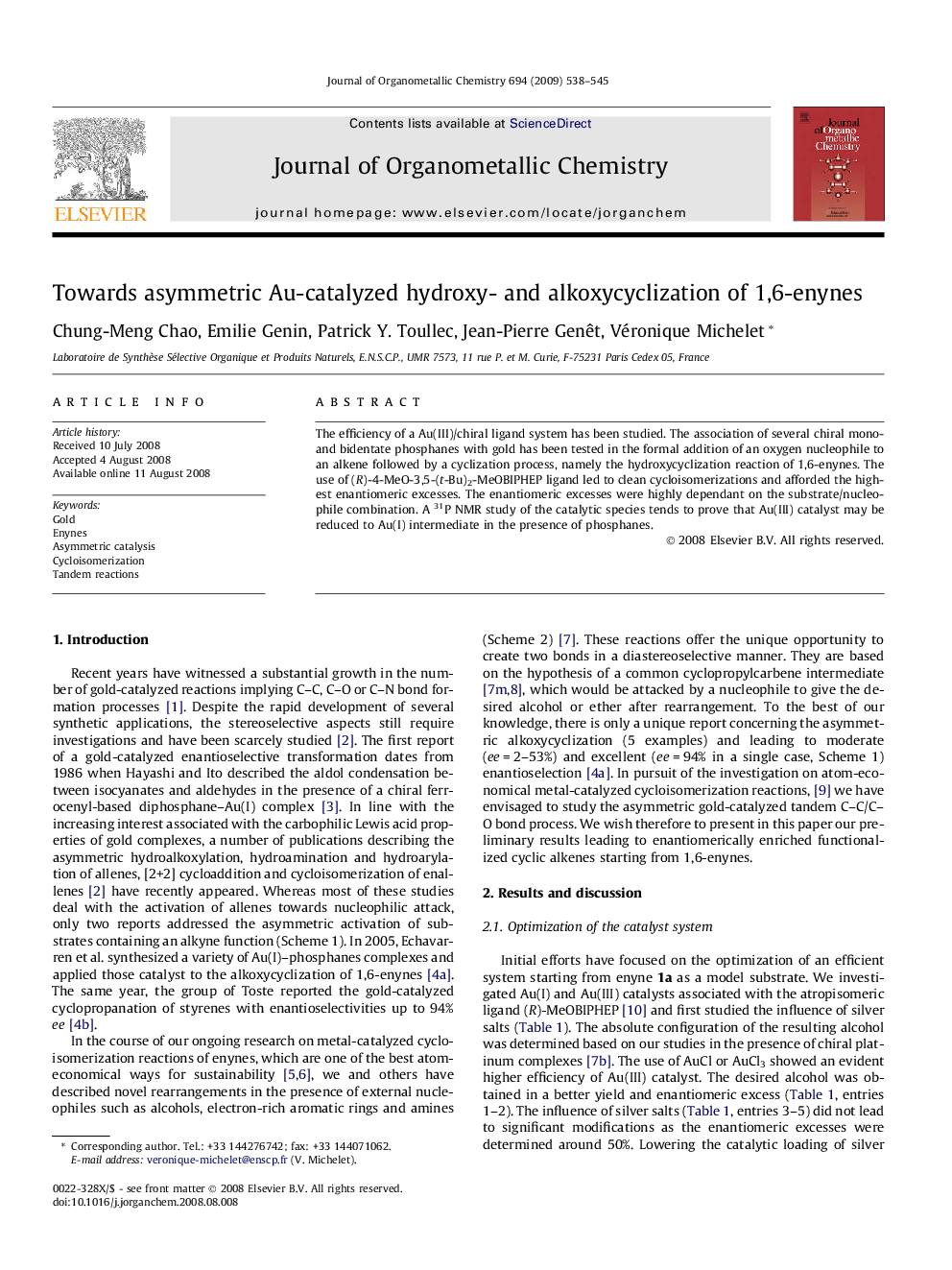| Article ID | Journal | Published Year | Pages | File Type |
|---|---|---|---|---|
| 1327626 | Journal of Organometallic Chemistry | 2009 | 8 Pages |
The efficiency of a Au(III)/chiral ligand system has been studied. The association of several chiral mono- and bidentate phosphanes with gold has been tested in the formal addition of an oxygen nucleophile to an alkene followed by a cyclization process, namely the hydroxycyclization reaction of 1,6-enynes. The use of (R)-4-MeO-3,5-(t-Bu)2-MeOBIPHEP ligand led to clean cycloisomerizations and afforded the highest enantiomeric excesses. The enantiomeric excesses were highly dependant on the substrate/nucleophile combination. A 31P NMR study of the catalytic species tends to prove that Au(III) catalyst may be reduced to Au(I) intermediate in the presence of phosphanes.
Graphical abstractThe use of AuCl3 associated with the chiral ligand (R)-4-MeO-3,5-(t-Bu)2-MeOBIPHEP in the presence of silver salts was found to be efficient for the preparation of functionalized alcohols and ethers via hydroxy- and alkoxycyclization reactions. The reaction conditions are compatible with carbon-, oxygen- and nitrogen-tethered enynes and afforded the corresponding carbocycles and heterocycles in good to excellent yield. The enantioselective version was optimized and led to moderate to good enantiomeric excesses. The nature of the catalytically active species of the gold-catalyzed reaction was investigated by 31P NMR analysis.Figure optionsDownload full-size imageDownload as PowerPoint slide
